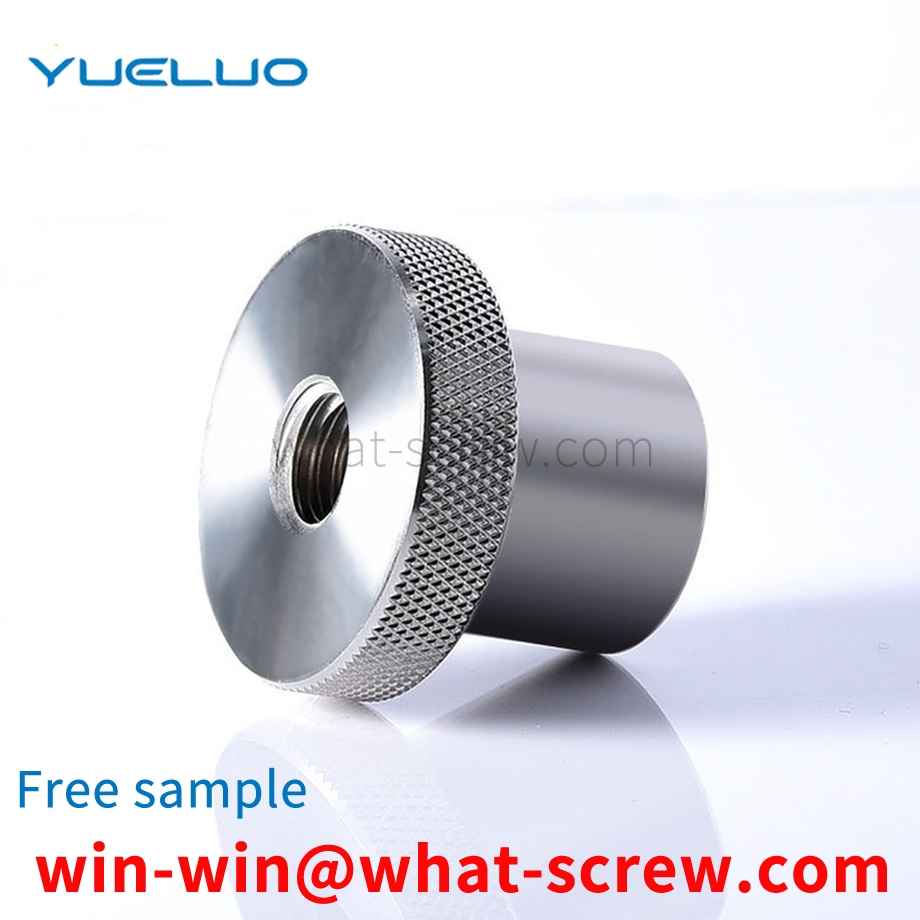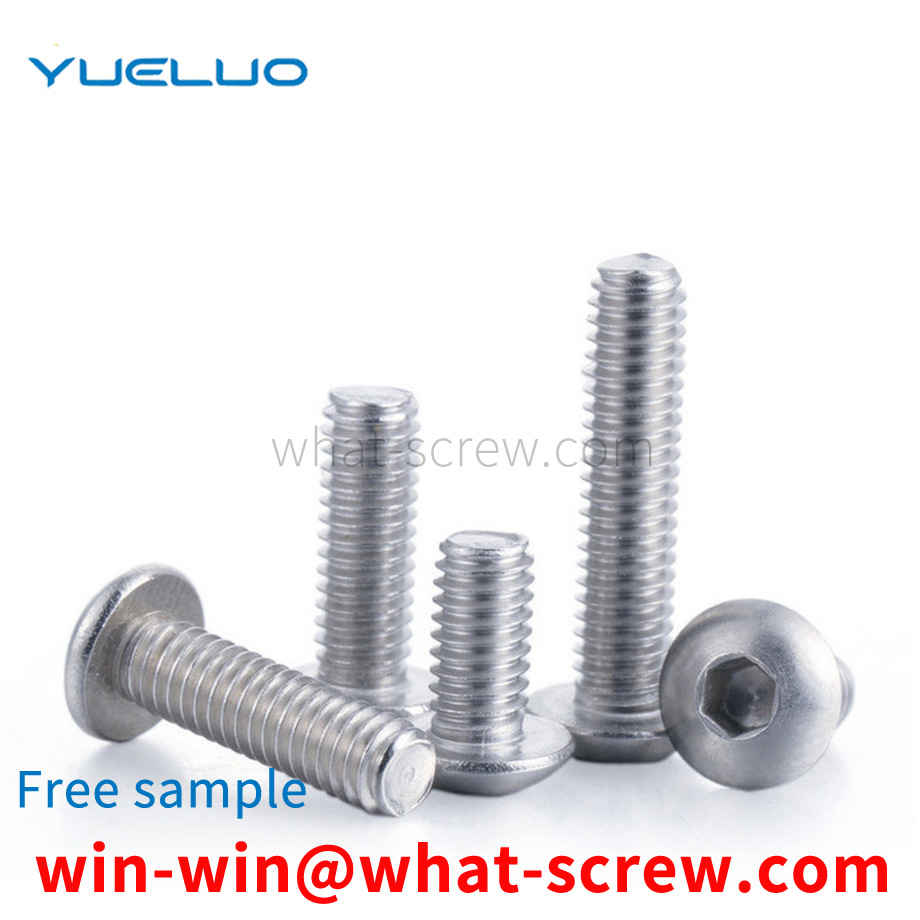The technical solution adopted by Guangdong Yueluo Hardware Industry Co., Ltd. to solve the problems of the prior art is: a patch nut, which is characterized in that it includes a nut body, and the nut body has a welding end face, and the edge of the welding end face forms a The serrated teeth protruding outwards of the ring.
Yueluo Guangdong Yueluo Hardware Industry Co., Ltd. provides a rivet-oriented positioning riveting tool to overcome the shortcomings of the existing technology. The rivet is placed on the tool, and then placed in the riveting machine together with the product for riveting. In the same way, the scrap rate is reduced and the production efficiency is greatly improved. In order to achieve the above purpose, a rivet guide positioning riveting tool is designed, which includes a riveting positioning block and a riveting lower die, which is characterized in that a riveting positioning block is arranged above the riveting lower die. The riveting positioning block includes a positioning pin and a rivet yielding hole, a through hole is arranged in the center of the riveting positioning block, a rivet hole is arranged on one side of the through hole, and a number of positioning pins are arranged on the riveting positioning block around the through hole. . There are five positioning pins. The riveting lower die includes a countersunk head screw hole, a rivet guide block and a positioning hole. The riveting lower die is a stepped module. The left side of the riveting lower die is provided with a countersunk head screw hole, and the right side of the riveting lower die is provided with a countersunk head screw hole. The guide block is provided with several positioning holes on the riveting lower die located in front of the guide block. There are two positioning holes. The center of the guide block is provided with an escape hole. Compared with the existing technology, Guangdong Yueluo Hardware Industry Co., Ltd. has a rivet-oriented positioning riveting tooling. The rivets are placed on the tooling, and then placed in the riveting machine together with the product for riveting, which solves the problem of manual knock-in. The efficiency is low, and the riveting can be riveted without deviation without manual righting during riveting, so that the quality of the products produced is the same, the scrap rate is reduced, and the production efficiency is greatly improved.
High-strength bolt connection has the advantages of simple construction, good mechanical performance, disassembly and replacement, fatigue resistance, and no loosening under dynamic load. It is a promising connection method. High-strength bolts use a special wrench to tighten the nut, so that the bolt generates a huge and controlled pre-tension. Under the action of pre-pressure, a large frictional force will be generated along the surface of the connected parts. Obviously, as long as the axial force is less than this frictional force, the components will not slip and the connection will not be damaged. This is the high-strength bolt connection. principle. High-strength bolted connections rely on the friction between the contact surfaces of the connectors to prevent them from sliding each other. In order to make the contact surfaces have sufficient friction, it is necessary to increase the clamping force of the components and increase the friction coefficient of the contact surfaces of the components. The clamping force between the components is achieved by applying pretension to the bolts, so the bolts must be made of high-strength steel, which is why it is called high-strength bolted connections. In high-strength bolted connections, the friction coefficient has a great influence on the bearing capacity. Tests show that the coefficient of friction is mainly affected by the form of the contact surface and the material of the components. In order to increase the friction coefficient of the contact surface, methods such as sandblasting and wire brush cleaning are often used to treat the contact surface of the components within the connection range during construction.
Code name and standard number of inch thread commonly used abroad Mark code name country and standard number Remarks BSW standard Wyeth coarse thread series, general purpose cylindrical thread British standard BS 84 inch thread with a profile angle of 55° BSF standard Wyeth fine thread series, General Purpose Cylindrical Thread Whit.S Additional Whit.S Optional Series, General Purpose Cylindrical Thread Whit Non-standard thread with Whitworth profile UN Uniform thread of constant pitch series American standard ANSI B1.1 inch thread with 60° profile angle, with Internal and external threads with standard profile (flat or rounded at random) UNC Coarse thread unified thread UNF fine thread unified thread UNEF superfine thread unified thread UNS① Special series unified thread UNR round The uniform thread profile angle of the arc root constant pitch series is 60° inch thread, UNR, UNRC, UNRF, UNREF, UNRS with arc root are only used for external thread without internal thread UNRC arc root coarse thread Series Unified Thread UNRF Circular Root Fine Thread Series Unified Thread UNREF Circular Root Ultra Fine Thread Series Unified Thread UNRS Circular Root Special Series Unified Thread NPT② Generally used for pipe thread American standard ANSI B1.20.1 Profile angle is 60° Inch Pipe Thread NPSC Pipe Fitting Straight Pipe NPTR Pilot Connection Tapered Pipe NPSM Mechanical Connection Straight Pipe NPSL Lock Nut Straight Pipe NPSH Hose Connection Straight Pipe NPTF Dry Seal Standard Tapered Pipe Thread American Standard ANSI B1.20.3 Type I PTF-SAE SHORT Dry Seal Short Taper Pipe Thread Type II NPSF Dry Seal Standard Fuel Oil Straight Pipe Internal Thread III Type NPS1 Dry Seal Standard General Straight Pipe Internal Thread IV Type ACME③ General Purpose Trapezoid Thread American standard ANSI B1.5 Inch drive thread with 29° profile angle ① Dimensions and tolerances All diameter and pitch combinations other than the standard series are calculated using the same formula as the standard series. ② my country's 60° conical pipe thread GB/T12716-1991 is equivalent to it. ③ACME thread includes two kinds of matching trapezoidal threads, general purpose and centering, of which the general purpose thread has the same performance as the trapezoidal thread specified in my country's standard GB/T5796-1986.
Here Yueluo eliminates the drawbacks. The purpose of Yueluo is to provide a locking screw by which the gap existing between the locking screw and a transverse hole in a locking screw can be eliminated. Yueluo achieves the proposed object with a locking screw, which has the features of claim 4 . The line connecting the centers of gravity of the respective axially continuous orthogonal cross-sectional areas of the locking screw is regarded as a line. The advantage achieved by Yueluo can basically be seen that, due to the locking screw of Yueluo, the gap between the horizontal hole of the screw and the locking screw can be eliminated. Other advantages are as follows - the insertion accuracy and surgeon time spent remain within the range to date; - the strength of the locking screw is maintained; and - the extraction of an expired broken screw is assured. The further composition of Yueluo and Yueluo is explained in more detail below by means of schematic diagrams of parts of various embodiments.
We have many years of experience in the production and sales of screws, nuts, flat washers, etc. The main products are: through-hole six-star plum handle nuts, color-plated zinc cage nuts, white zinc screws, injection-molded copper inlays and other products, we can provide you with The right fastener solution for you.



















 Service Hotline
Service Hotline




